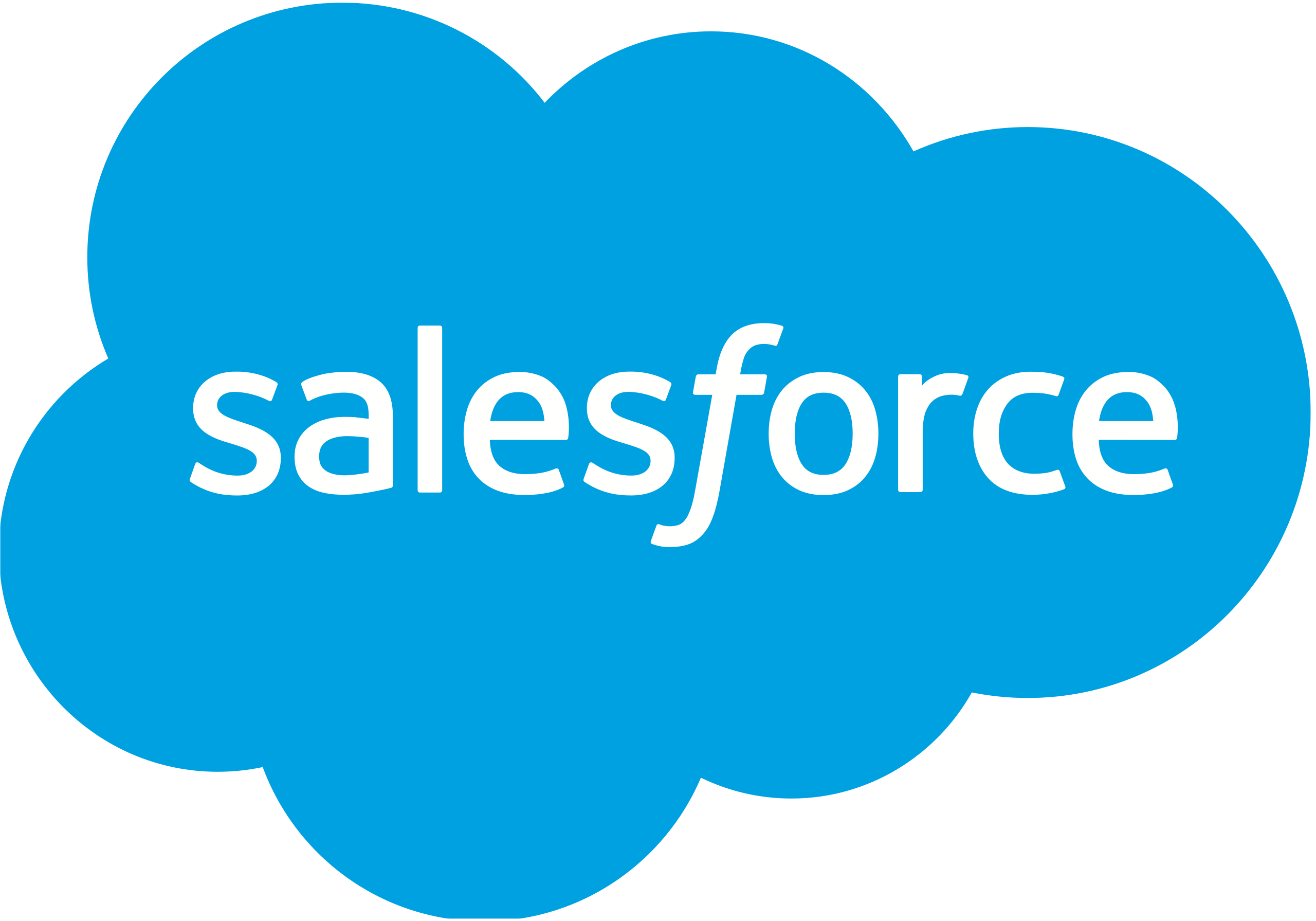Executive summary
Higher education is in the middle of a transformation. Student expectations are shaped by consumer experiences—on-demand, personalized, and seamless. Yet most institutions are still running on legacy systems, disconnected tools, and overstretched staff.
In this environment, leaders evaluating new technology face a critical decision:
- Do we adopt a general-purpose CRM and extend it into higher education?
- Or do we invest in a purpose-built, AI-first solution designed to function as a true workforce multiplier?
This question sits at the heart of the comparison between Salesforce Education Cloud and Element451.
Salesforce is a powerful, flexible CRM platform with a massive ecosystem. But it remains, fundamentally, a CRM—a record system that requires add-ons, configuration, and administrative expertise to adapt to higher education-often by adding Marketing Cloud (email/journey orchestration), Account Engagement/Pardot (B2B lead nurturing), Experience Cloud (portals), and SMS/WhatsApp via third-party apps (e.g., Mogli, Twilio). That assembly typically requires a dedicated Salesforce administrator and, very often, an implementation partner.
Element451, once known as an AI-first CRM, has now evolved into something categorically different: an AI Workforce for Higher Ed. Instead of just organizing student data and surfacing that data for staff to action on, Element451 now provides a coordinated team of AI Agents with defined objectives (recruiting, marketing, application reading, financial aid, student success) who act as digital teammates. These agents draft and send communications, field inquiries 24/7, score applications, flag risks, and escalate to staff—all under human oversight.
This distinction is critical. Where a CRM requires staff to push buttons and manage rules, an AI Workforce executes the high-volume, repetitive work—freeing staff to focus on strategy, relationships, and decision-making.
Bottom line: Choose Salesforce when you have (a) a strong in-house admin bench and (b) a mandate to standardize on the broader Salesforce platform (including Data Cloud) across the institution. Choose Element451 when you want an AI-first, higher-ed-specific platform with built-in communications and student journey tooling that minimizes add-ons and admin overhead.
This blog provides a deep, authoritative comparison between Salesforce and Element451, equipping higher ed leaders to make an informed decision about which approach best fits their institutional goals.
Who they are (at a glance)
Salesforce (Education Cloud) — An “industry cloud” built on the core Salesforce CRM, with an education data model (EDA → Education Cloud), plus optional clouds for marketing, portals, analytics, and data unification. Salesforce is heavily investing in agentic AI (Agentforce) and positions Education Cloud as a “deeply unified” platform spanning recruitment, student success, advancement, and more.
Element451 — An AI Workforce Platform dedicated to higher education with integrated AI agents, generative search/discovery, and StudentHub portal for mobile, 24/7 support—designed to personalize and automate student communications across the journey without relying on third-party messaging stacks.
Comparing Salesforce to Element451


Core Identity
Salesforce
General-purpose CRM extended into higher ed with Education Data Model
Element451
AI Workforce Platform purpose-built for higher ed: digital teammates (AI agents) that act, not just track
Primary Orientation
Salesforce
Records, relationships, data model management
Element451
Student engagement and outcomes via AI action + automation
Higher Ed Specificity
Salesforce
Medium — requires customizing CRM objects and adding modules for engagement
Element451
High — designed exclusively for higher ed journeys (marketing, admissions, student success)
Communications
Salesforce
Requires Marketing Cloud Engagement (email/journeys) + AppExchange apps (SMS/WhatsApp)
Element451
Built-in multi-channel communications (email, SMS, push) natively integrated with student data
Portals & Student Experience
Salesforce
Experience Cloud templates; requires configuration and admin resources
Element451
StudentHub — mobile-first AI-powered hub with discovery, agents, and real-time updates
AI Strategy
Salesforce
Einstein + Agentforce (broad platform-level AI for all industries)
Element451
AI Workforce tailored for higher ed — Agents (Admissions, Financial Aid, Academic, Peer) and Generative Search
Automation
Salesforce
Workflow and Flow Builder; often requires admin skill to configure and maintain
Element451
Proactive AI Agents that automate student and staff workflows out-of-the-box
Implementation
Salesforce
High lift: requires Salesforce admin + often an implementation partner for multi-cloud setup
Element451
Lighter lift: purpose-built features reduce setup; minimal reliance on outside integrators
Staffing Dependency
Salesforce
Dedicated Salesforce administrator almost always required
Element451
Reduced admin dependency; AI workforce handles many operational tasks
Ecosystem & Extensibility
Salesforce
Very large AppExchange ecosystem (3rd-party apps for SMS, scheduling, forms, events
Element451
Narrower ecosystem but integrated toolset eliminates most common add-on needs
Analytics & Data
Salesforce
CRM Analytics & Data Cloud (licensed separately)
Element451
Built-in engagement analytics optimized for higher ed KPIs
Time to Value
Salesforce
Slower — assemble modules, configure data model, hire admin/partner
Element451
Faster — pre-configured higher ed workflows, AI workforce ready to deploy
Total Cost of Ownership
Salesforce
Variable; grows with each add-on (Marketing Cloud, Data Cloud, Experience Cloud, SMS vendors)
Element451
More predictable; fewer external licenses or integrators needed to reach full functionality
Best Fit
Salesforce
Large university systems standardizing enterprise systems with dedicated Salesforce teams
Element451
Institutions wanting immediate AI-powered engagement and student-centric operations without heavy admin
Platform architecture & scope
Salesforce: an education “industry cloud” assembled
from core CRM + add-ons
Salesforce Education Cloud provides an education-specific data model and applications for recruitment/admissions, student success, alumni/advancement, and academic operations. However, lifecycle engagement at scale typically relies on adjacent Salesforce products: Marketing Cloud Engagement (for cross-channel messaging/journeys), Account Engagement/Pardot, Experience Cloud (for portals), CRM Analytics, and Data Cloud. These are licensed and configured separately and integrated via connectors.
Salesforce itself highlights “add-ons, apps, and additional products” and notes Education Cloud contracts are typically annual. Public “add-on pricing” catalogs underscore that expanding capability usually means stacking SKUs.
Element451: higher-ed-specific, communications-native
Element451 packages higher-ed CRM, communications, and AI capabilities together (e.g., StudentHub, AI Agents, generative search), so institutions do not need to bolt on separate email/SMS/portal products to stand up common recruitment, comms, and success use cases.
Implication: Salesforce’s breadth is unmatched, but higher-ed buyers must plan a multi-product architecture. Element451 narrows scope to higher-ed engagement and streamlines the path to value by shipping core communications and AI natively.
AI & automation
Salesforce: Agentforce (agentic AI) and Einstein are being woven across clouds, with education-specific initiatives (e.g., Agentforce for Education pilots, Accelerator programs). Financial press and industry coverage show Agentforce is a strategic bet, with real customer interest but also questions near-term monetization.
Element451: Positions the platform as AI-first for higher ed—Bolt Agents for the full student lifecycle are front-and-center to drive personalization, proactive support, and 24/7 experiences.
Implication: Salesforce’s AI is broad and platform-centric (great for institutions standardizing on Salesforce). Element451’s AI is broad and deep for higher-ed engagement use cases, which can accelerate time-to-value for enrollment and success teams.
Implementation effort & staffing model
Salesforce explicitly documents Education Cloud setup for admins, including permissions, data modeling, portals, and connectors. Trailhead training literally greets, “Hello, Education Admin!” and outlines admin responsibilities to install, configure, maintain, and operate Education Cloud.
The Education Cloud ecosystem strongly orients buyers to implementation partners (Salesforce Foundation “Find a Consulting Partner”; abundant partner marketing and AppExchange listings). In practice, most institutions use partners to stand up multi-cloud architectures and integrations.
Element451 minimizes multi-vendor assembly for core comms and student engagement, which typically reduces the admin/partner lift compared to a multi-cloud Salesforce approach. (Positioned explicitly as AI-first, higher-ed-specific.)
Implication: If you do not have (or cannot fund) a Salesforce admin and an implementation partner, factor that into TCO and timeline assumptions for Salesforce.
Pricing, contracts & total cost of ownership (TCO)
Salesforce Education Cloud uses annual contracts; expanded capabilities (Marketing Cloud, Data Cloud, Experience Cloud, Analytics, SMS apps) are additional products/add-ons. Salesforce publishes a general add-ons catalog and steers Education pricing discussions to sales.
Element451: Packaged specifically for higher-ed engagement and agentic workflows; fewer third-party licenses are typically required to reach parity on communications and student experience.
Implication: Salesforce TCO is highly variable and increases with each cloud/app you add and each partner SOW you sign. Element451’s TCO tends to be more predictable for enrollment and success scenarios because comms and AI are included out-of-the-box.
Strengths and best-fit scenarios
Where Salesforce shines
Enterprise standardization: If your CIO wants one platform and your campus already runs multiple Salesforce clouds, Education Cloud plugs into existing governance and identity patterns.
Breadth & extensibility: Massive AppExchange and partner ecosystem gives you a tool for almost any job (SIS adjuncts, advancement suites, portals, events, SMS, background checks, etc.).
Agentic AI at platform level: Agentforce and Einstein span clouds and can be combined with Data Cloud for segmentation and activation.
Where Element451 shines
Higher-ed-first: Feature set maps directly to recruitment, comms, and student success without assembling multiple products.
Faster time to engagement: Native messaging, proactive AI agents, and StudentHub portal reduce integration work for the most common use cases.
Operational simplicity: Less admin overhead vs. managing multiple Salesforce clouds, connectors, and third-party apps.
Risks, constraints & “gotchas” to model
For Salesforce
Plan for admin capacity (permissions, data model, connectors, release management) and partner SOWs to get to first value.
Marketing & messaging need separate licensing (Marketing Cloud/Account Engagement) and a robust data sync design.
SMS/WhatsApp typically requires AppExchange apps and additional vendor contracts (Mogli, Twilio), with governance for opt-in/compliance.
TCO can sprawl as you adopt more clouds and apps; contract terms are usually annual.
For Element451
If your strategic direction is to standardize on the Salesforce platform campus-wide, you may prefer Salesforce to consolidate vendor/skill sets (identity, security, and platform ops).
Element451 focuses on higher-ed engagement outcomes rather than offering a general-purpose, all-industry PaaS like Salesforce.
Realistic implementation patterns you’ll see on campus
Common Salesforce stack for enrollment & success
Education Cloud + Marketing Cloud + Experience Cloud portals + SMS app (Mogli/Twilio) + Data Cloud/CRM Analytics (optional) + consulting partner + at least one dedicated admin.
Common Element451 stack
Element451 core (CRM + comms), Bolt Agent Teams, StudentHub—often without external messaging vendors; integrations to SIS/identity as needed.
FAQs
Isn’t Salesforce “built for higher ed”?
Will we need a Salesforce admin?
Do we have to buy add-ons to handle email and SMS?
Is Salesforce’s new Agentforce an advantage over Element451’s AI?
What to test in a proof-of-concept
Time-to-first-campaign
How many products and connectors must be configured before you can send a segmented, multi-channel journey? (Salesforce: Marketing Cloud + connector; SMS app; Experience Cloud portal, etc.)
Admin workload
Who owns data model changes, permission sets, journey configuration, and release changes? Validate the admin hours/week.
Cost realism
Price the full picture (base licenses + Marketing Cloud + portal + SMS + analytics + partner SOWs) vs. consolidated licensing for Element451.
AI outcomes
For Salesforce, pressure-test Agentforce/Einst. scenarios with Data Cloud segments. For Element451, measure lift in engagement and staff time reduction via assistants/StudentHub.
Sample RFP language you can reuse
“Describe which engagement channels are native vs. require additional products or third-party apps (email, SMS/WhatsApp, push, chatbot/agents, student portal).”
“Detail administrative roles and skills required to operate the platform (permissions, data model, connectors, releases).”
“Provide total cost for a production-ready enrollment stack that includes CRM, multi-channel messaging, portals, segmentation/analytics, and AI assistants for 12 months.”
Conclusion
Both platforms can support modern enrollment and student success. The key difference is how you get there:
Salesforce provides an extensible, enterprise-grade foundation with strong AI momentum—but most higher-ed institutions will assemble their engagement stack from multiple Salesforce clouds and AppExchange products and will need dedicated admin capacity (and often a partner) to keep it humming.
Element451 compresses that assembly into a higher-ed-first, AI-agent workforce platform where communications, student portals, and agents are built-in—reducing time-to-value and operational overhead for admissions, marketing, and student success teams.
Book a consult now
Ready to explore the differences between Element451 and Salesforce. Share your information and an AI expert will be right with you.





